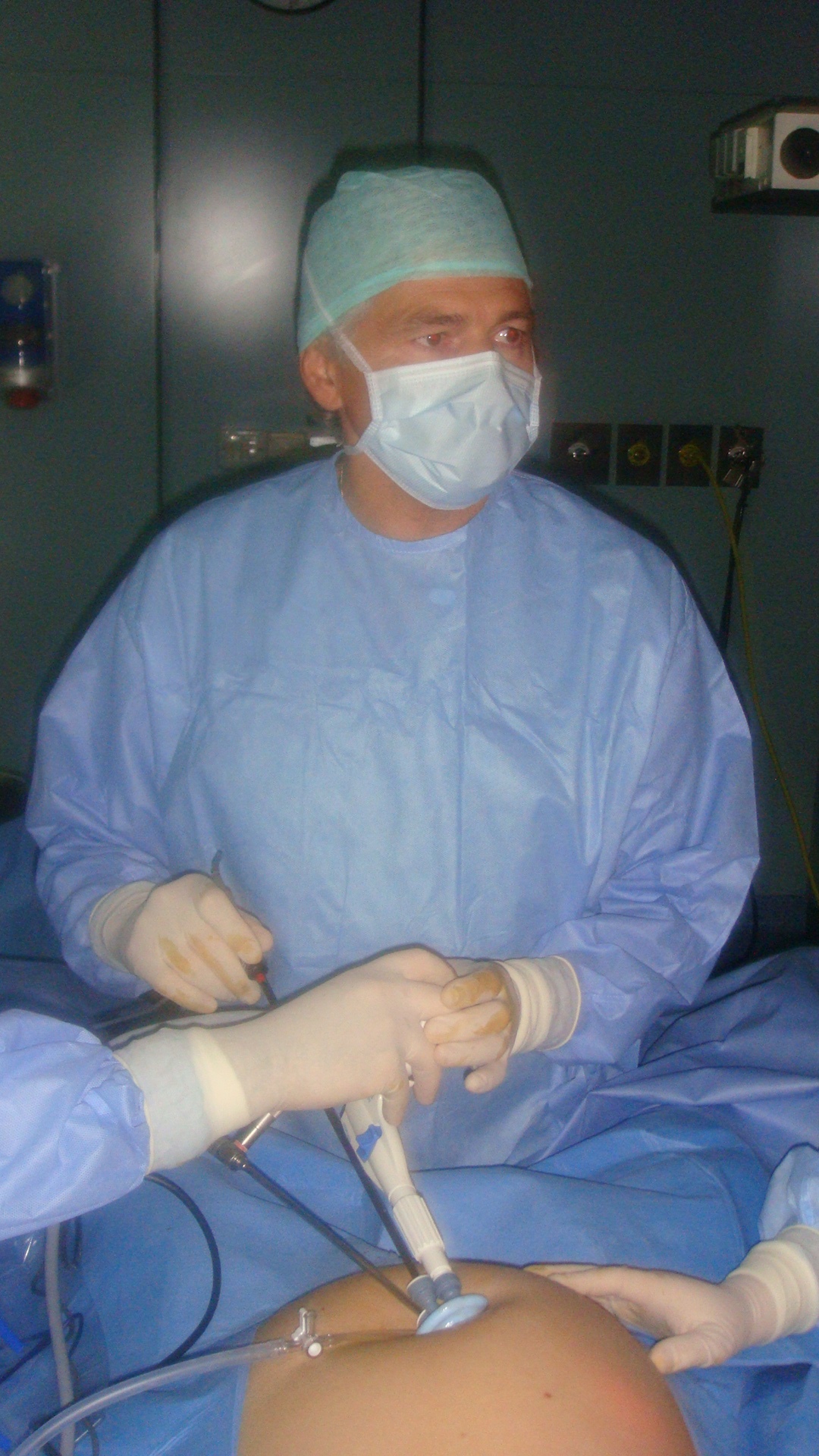With the term "mini-invasive surgery" or videopaparoscopy is meant a special surgical technique that allows any surgery to be reduced by reducing the entry point of surgical instruments to cuts of a few millimeters, thus avoiding wide openings on the skin.
It has represented a revolutionary breakthrough in the history of surgery and requiring highly sophisticated equipment is performed only in specialized centers.
Laparoscopic technique (from the Greek laparos = abdomen and scope = look) was born in the 70s and for 15 years it was used only in gynecology.
Only since 1985, when it was first performed to remove a gallbladder, it spread in all fields and it is estimated that only in the United States 95% of cholecystectomy is performed laparoscopically.
It is also called "gentle surgery" to stress the drastic reduction of surgical trauma compared to classical surgery.
Anesthesia can be local in simple exploratory, peridural or spinal laparoscopy in abdominal or general abnormalities.
Overall anesthesia is however proportioned to the minimum trauma compared to conventional surgery. Wounds have reduced to 3, 5 or 10 mm incisions, so even from an aesthetic point of view the result is very good, as there are no longer scars.
Vision is achieved with a camera by introducing gas (CO2) in the abdomen to detach the viscera from the wall. The intervention is performed with the aid of miniature precision instruments, introduced through incisions of a few millimeters.
The image is then displayed on a monitor where it is enlarged up to 20 times.
The use of small instruments associated with enlargement of the vision means that trauma on the tissues is much reduced compared to traditional surgery.
The advantage is enormous, as postoperative pain is minimal, the patient can get up and drink the day of surgery, eat the next day and may be home within 1-2 days in most cases.
The benefits of laparoscopic surgery compared to conventional surgery are:
Reduced postoperative pain.
Rapid recovery of their activities.
Quick discharge.
Best aesthetic result.
Rapid mobilization and minimum retraction.
Reduced incidence of respiratory, circulatory and cardiac complications.
Increase in immune defenses:
The reduced trauma on the organism results in a lower activation of those substances, called inflammatory mediators (TNF, Interleukines, cytokines) that are normally released during surgery; The low level of these substances reduces the malaise and the sense of exhaustion that follows a surgical operation and allows the body to put in place those self-healing mechanisms that are proper to it, unlike the traditional one that deprives them.
INDICATIONS:
The fields of application are vast.
Today there are few surgical interventions that are not performed laparoscopically.
- Calculation of gallbladder and coledoco
- Gynecologic disorders (ovarian cysts, myomas or uterine fibroids, vaginal discharge, etc.)
- Hernia and gastroesophageal reflux
- Colon and small intestine diseases
- Appendicectomy and other urgencies
- Genuine and Umbilical Hernia
- Laparocele
- Rene
- Milza
- Surrene
- Interventions for pathological obesity
- Stomach illnesses
- Thyroid diseases


